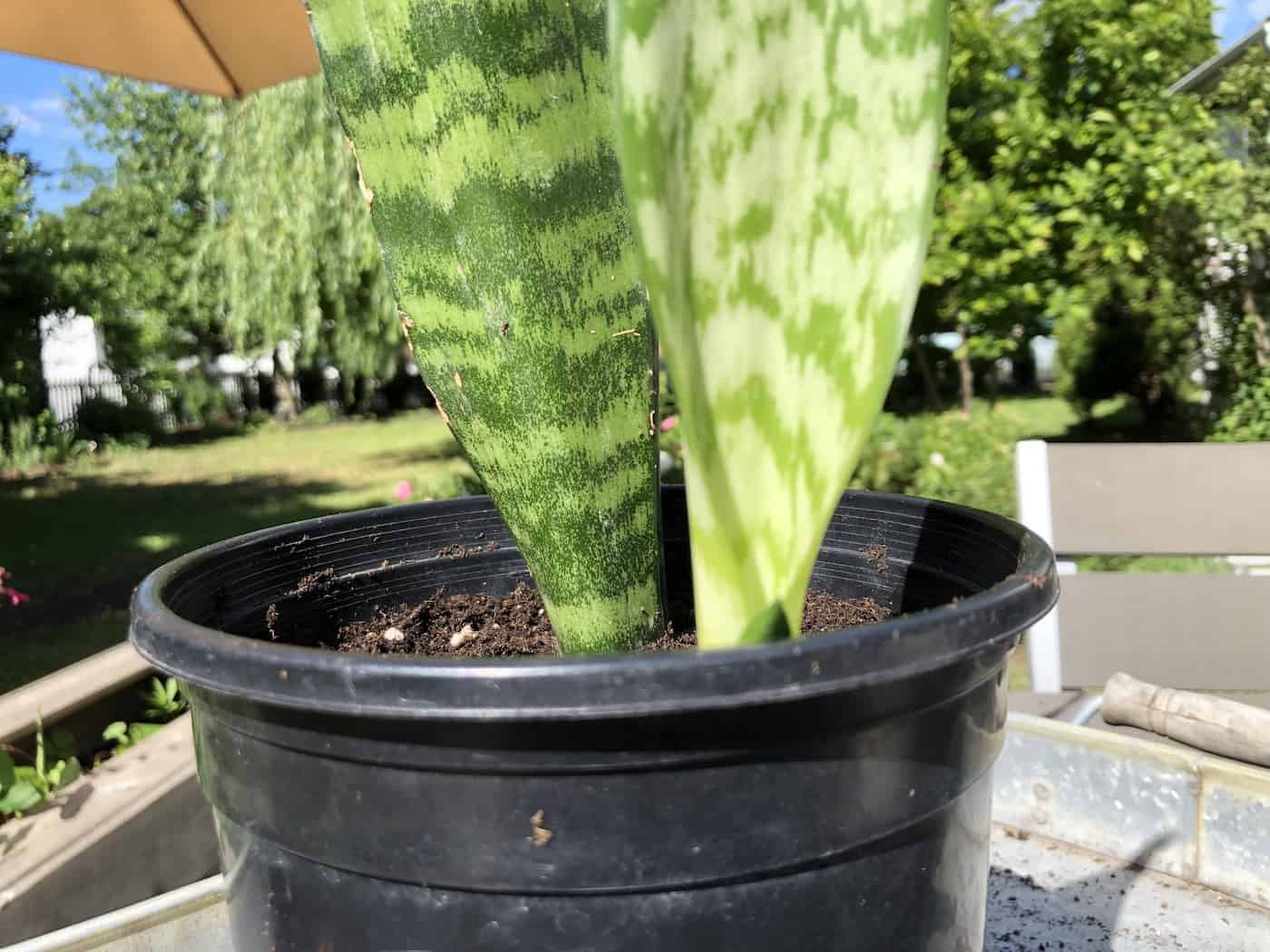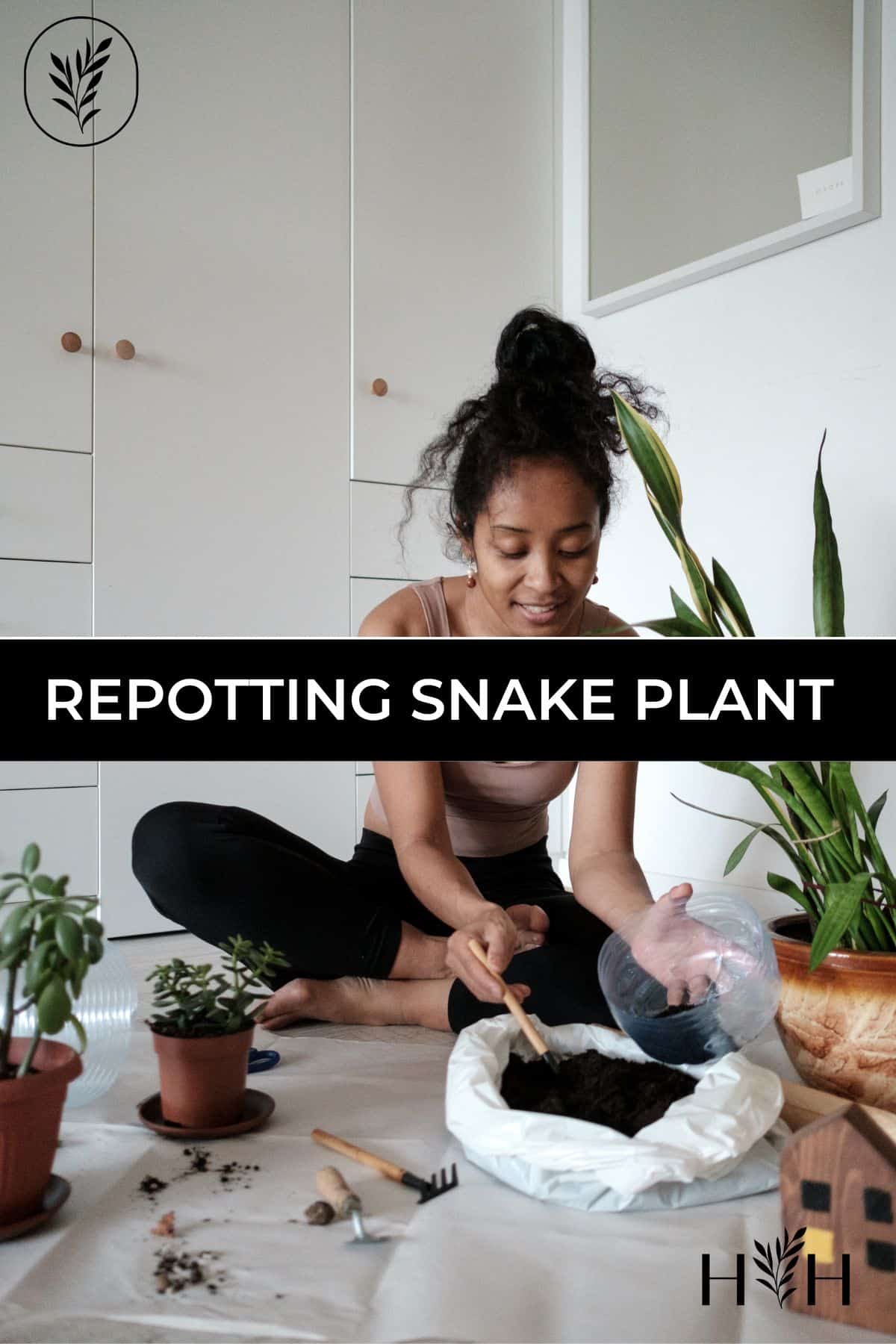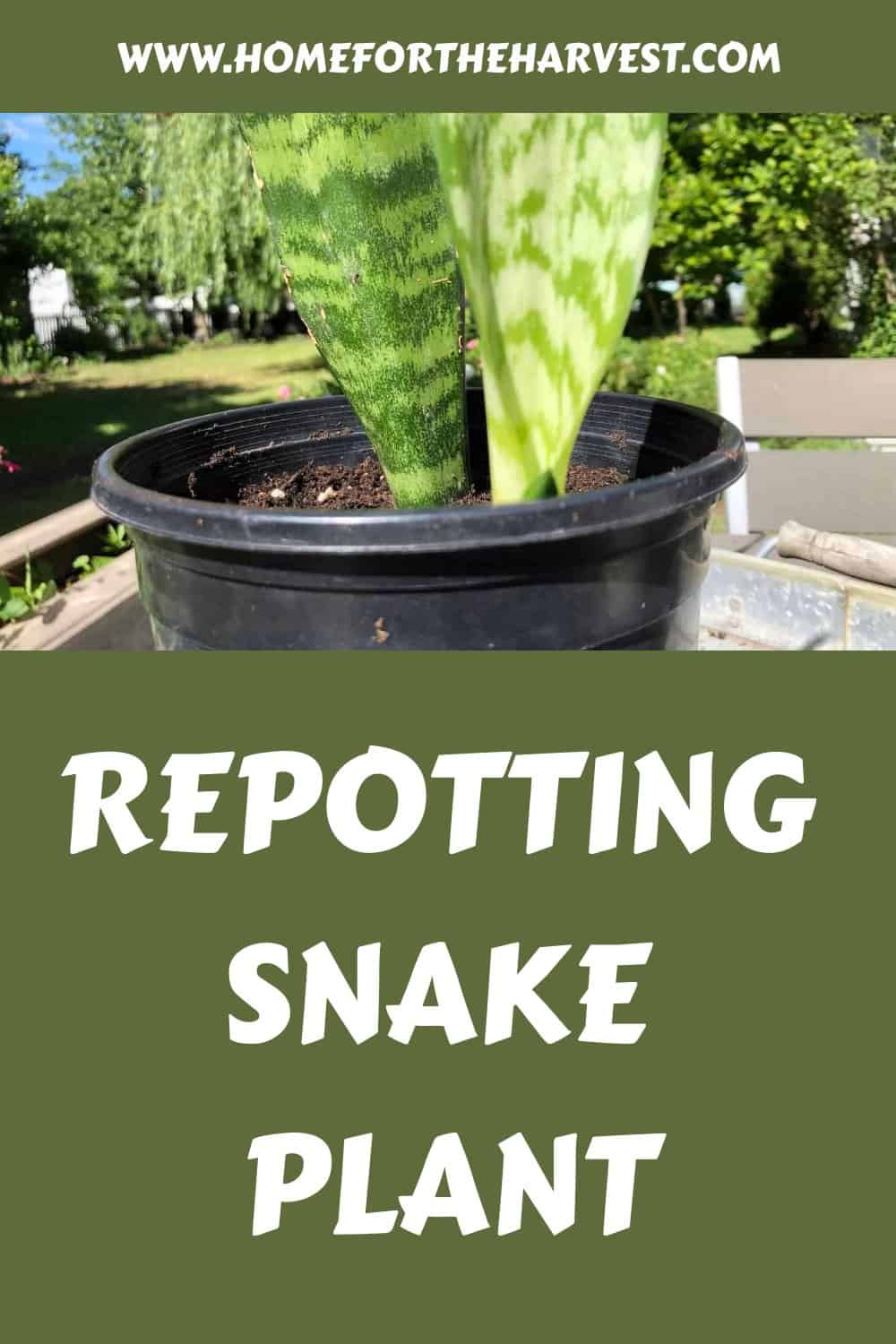Repotting a snake plant starts with finding a lightweight organic potting mix, such as a high-quality succulent & cacti soil blend. You’ll also need a planter slightly wider than the existing pot with at least one drainage hole at the bottom.
Pull the old pot off the snake plant and place it in the new pot. Backfill with some of the succulent potting mix.
Avoid watering the newly-repotted snake plant for a few days after watering (unless the plant is extremely dry). When it does come time for watering, check to ensure water drains well out of the pot.
Snake plant repotting basics
Snake plant (most commonly known as Sansevieria, but now classified in the genus Dracaena) grows outdoors in its native Africa and is also a very popular houseplant worldwide. Snake plants are naturally drought-tolerant and can withstand extended periods of dry potting soil in containers (unlike most fussy houseplants).
Snake Plants require re-potting every year or two as they outgrow their existing planters. These tall succulents tend to spread laterally and, therefore, require a wider area as they expand outwards. While Snake Plants do grow well when crowded, eventually, they will outgrow a small pot. New growth can be accommodated by repotting the whole snake plant into a wider pot, or by dividing the snake plant to keep it small (and to propagate new Snake Plants in their own planters from the divisions).
Repotting snake plants works best when using a high-porosity potting mix and a well-draining planter pot. Snake plants like airy, dry soil that does not hold onto water for long. They thrive in potting mixes made for succulents and cacti, which often contain lightweight ingredients like coco coir and perlite to add bulk without too much weight.
How to repot a snake plant
Here are the necessary supplies for repotting snake plants:
Repotting Supplies:
- Snake Plant
- Lightweight Organic Potting Mix
- Planter Pot with Drainage Hole(s)
- Garden Trowel
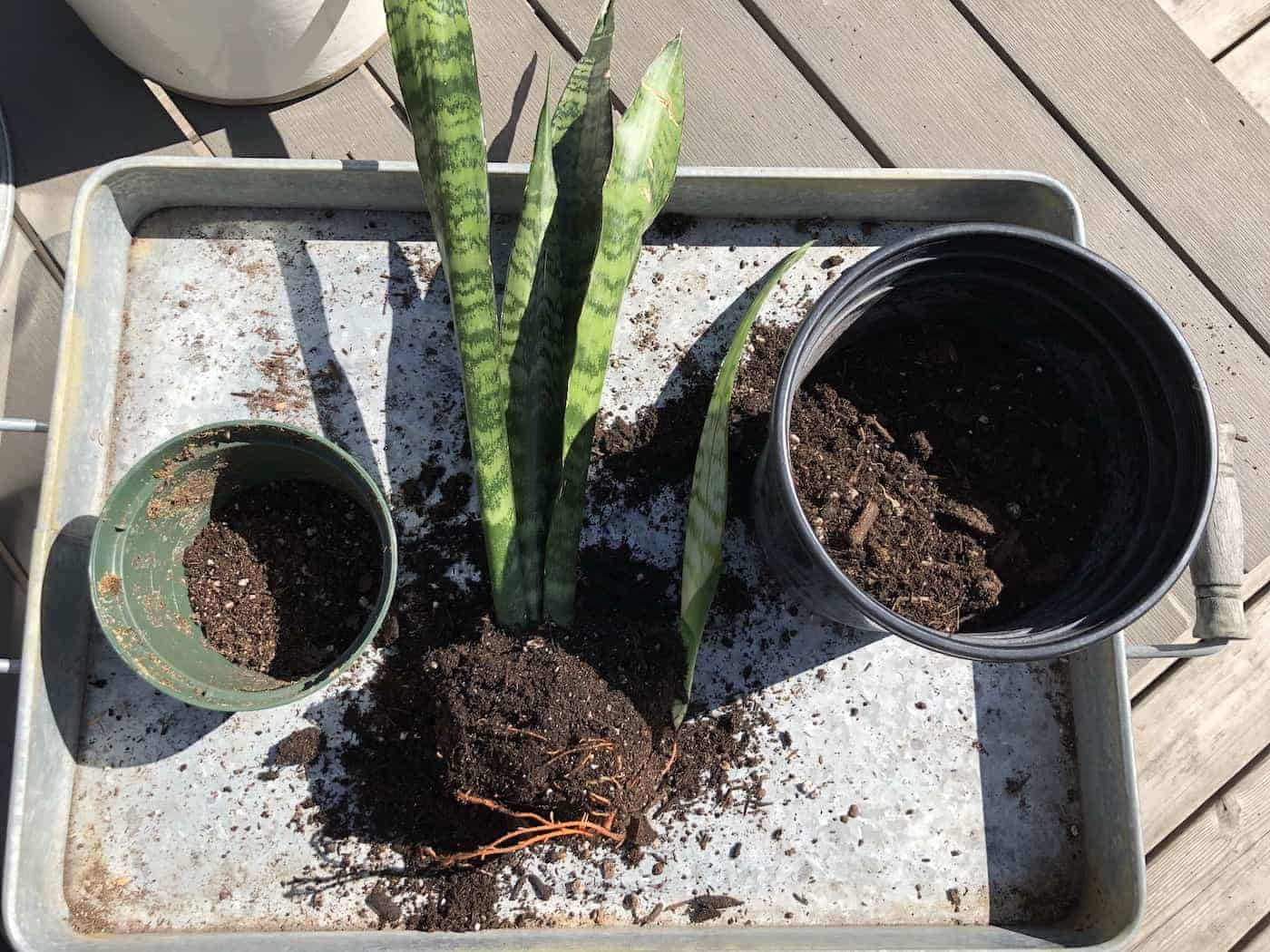
Step 1: Gather repotting supplies
Start by gathering together all the supplies required for repotting a Snake Plant. Double-check that your planter pot has a drainage hole (or holes) at the bottom. The new planter should be 1″-2″ wider than your existing pot (unless you intend on dividing the plant). Also, take this opportunity to read the ingredients on the potting mix bag if you haven’t yet had a chance.
Step 2: Pull the old planter pot away from the roots
Remove the existing planter pot from the root mass of the Snake Plant. Plastic pots can be squeezed on the sides if they’re stuck but may have to be cut off if they are really not budging. Plants stuck inside earthenware pots like terra cotta might need a trowel or soil knife around the inside of the pot to loosen the roots away from the inside the pot.
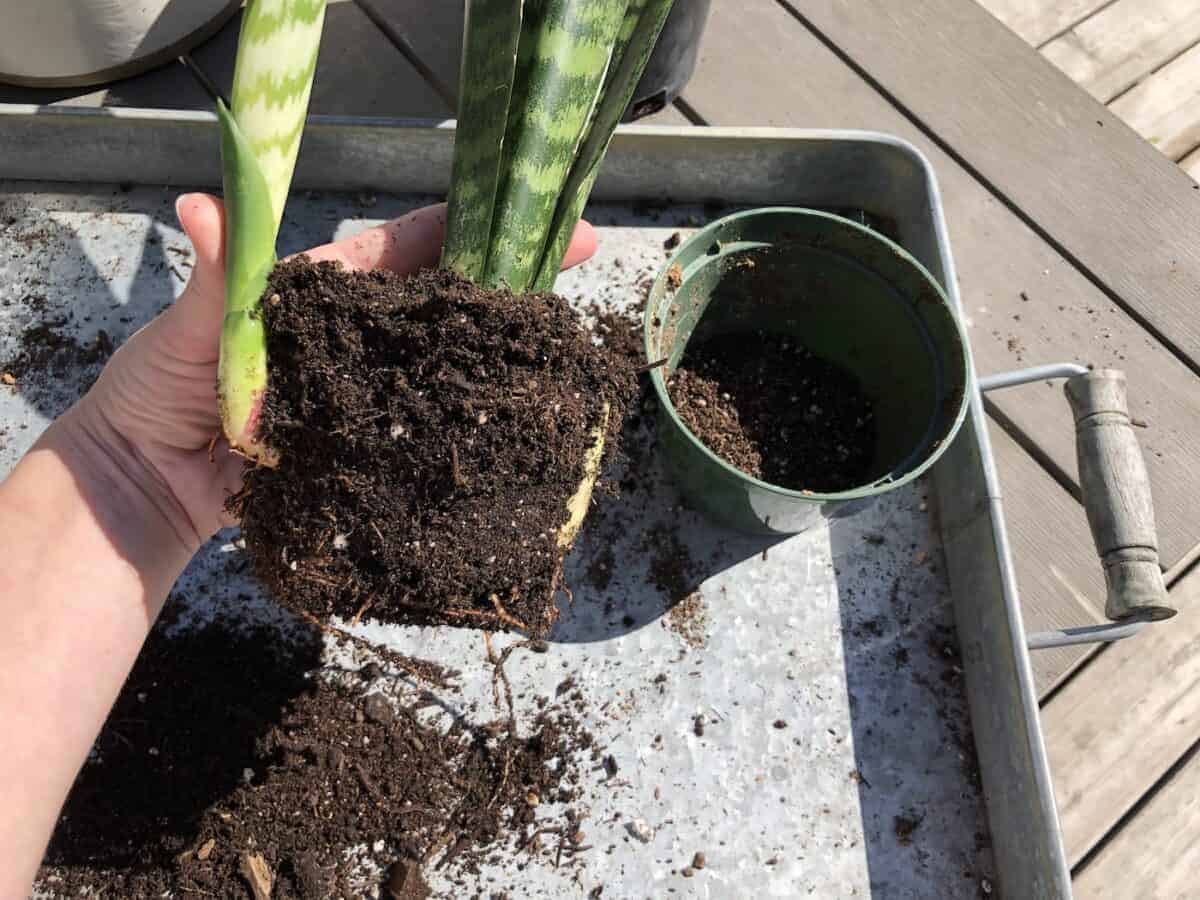
Step 3: Examine the snake plant’s roots
Look at the soil mass/root ball once it’s out of the old planter. If very few roots are visible on the outside of the soil, the plant can just be planted as is. If, however, there are many roots circling around the outside of the soil ball (indicating that the plant is root-bound), consider loosening up a few large roots away from the root ball. This will create spaces for roots to expand out into the new width available in the future planter.
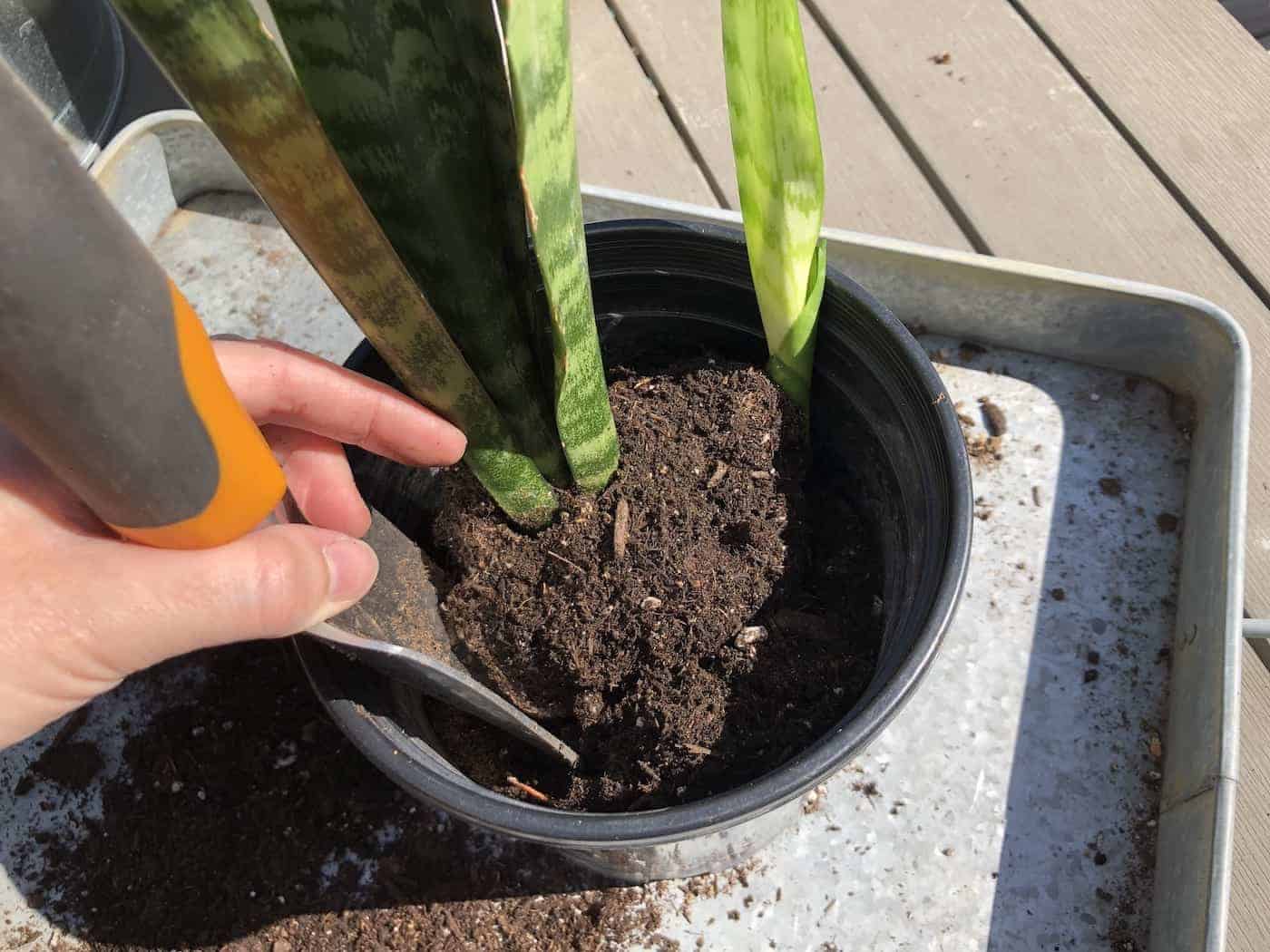
Step 4: Plant the snake plant in the new pot
Now it’s time to plant the Snake Plant in its new planter. If the planter is deeper than the old planter, add some potting mix to the bottom of the planter. Otherwise, just pop the root ball into the empty planter. Either way, the top of the soil around the base of the plant should be about a half inch to one inch below the top rim of the planter (to allow space for watering and mulch. Gently backfill the sides of the pot with more potting mix to fill the space between the root ball and the sides of the planter.
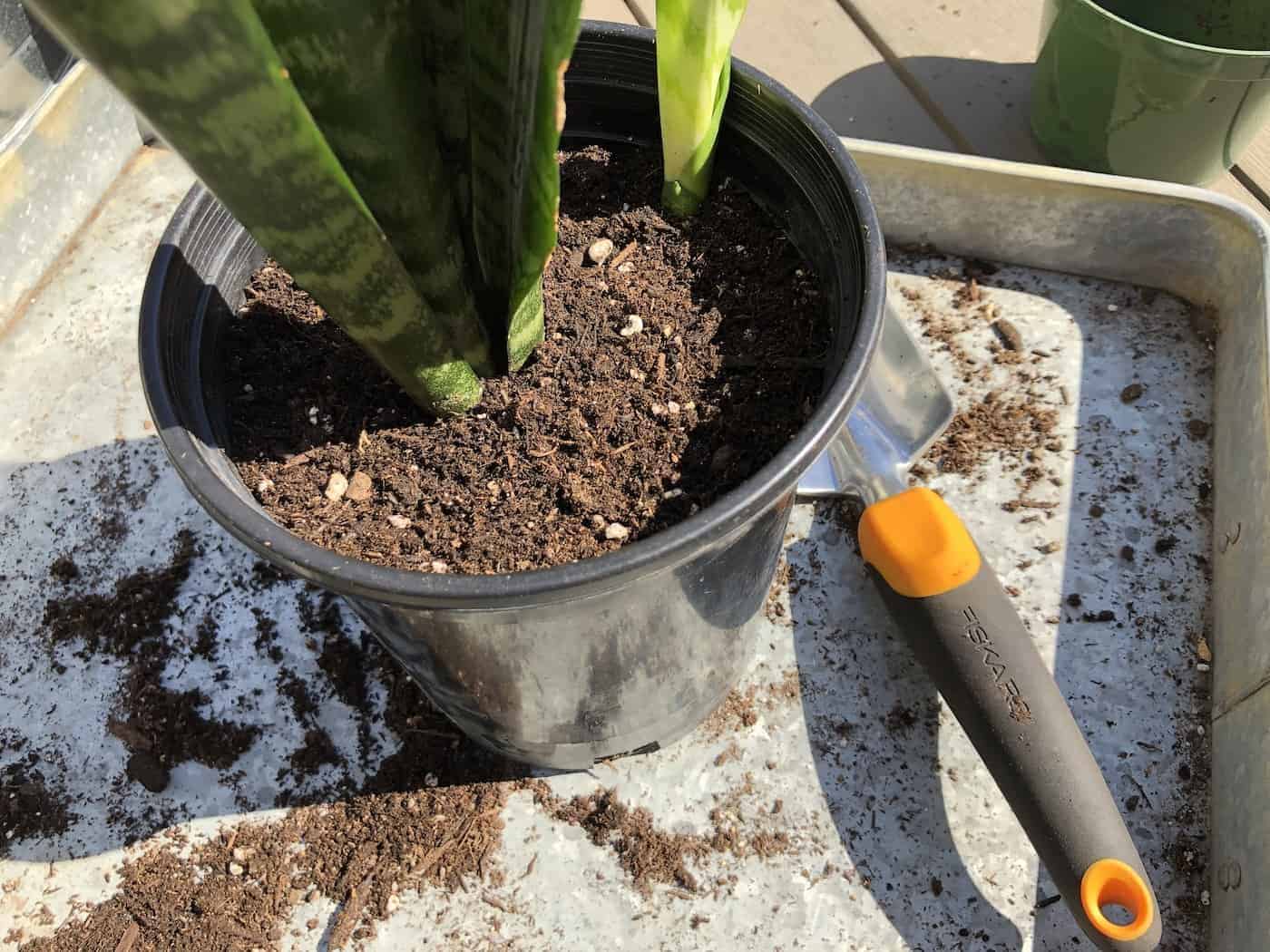
Should I water a snake plant after repotting?
Most snake plants don’t need to be watered immediately after repotting. Snake plants grow best in dry conditions and do not thrive in damp, cold soil. Unless the snake plant was extremely dry and brittle during repotting, it’s generally best to wait for a few days (or even up to a week) before watering it.
If your Snake Plant is extremely dry, water it prior to repotting (instead of after). Give the plant a few hours or overnight to absorb some water, and then repot the plant once it has had a chance to hydrate its cells.
Potting soil for snake plants
Potting soil for snake plants should be lightweight and airy. The soil needs to have lots of air pockets so it can drain water quickly, rather than holding lots of water and staying damp for a long time. Look for succulent/cactus potting mixes or other lightweight types. Common ingredients in potting mix for snake plants that help add lightweight (low-density) bulk include coco coir, peat, perlite, and expanded shale. Many mixes also include sand, which despite being heavy, does drain very quickly.
Here are some great potting soil choices for your Snake Plant:
- Hoffman Organic Cactus and Succulent Soil Mix contains peat, perlite, sand, and limestone
- Espoma Organic Cactus Mix contains peat, composted plant matter, perlite, limestone, and yucca extract
- The Sill’s Organic Cacti Mix is a mix of coco coir, compost, sand, worm castings, biochar, expanded shale, and rice hulls
Best pots for snake plants
The Hyde Planter from The Sill is one of the best pots for a Snake Plant. It has a big drainage hole and a matching saucer to protect surfaces from water drips. It’s available in different colors and always looks sharp with a nice tall Snake Plant.
Bergs Dotted Pot + Saucer Set is a classic terra-cotta pot option for Snake Plants from garden retailer Terrain. Bergs pots are made from Italian Galestro clay and age very well, developing a beautiful patina over time.
The Bishop Pedestal Planter from West Elm is a nice modern choice for a Snake Plant. It elevates the plant without requiring a separate plant stand. The pedestal base also serves as a water-collecting saucer. The Bishop planter is also sturdy enough to bring your plant outdoors onto the patio for a little houseplant summer vacation.


